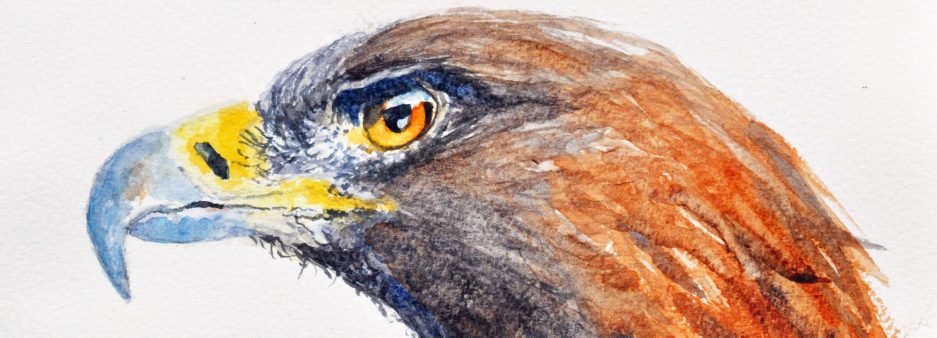This Lent I have had two devotional projects which, I think, will continue far beyond Easter.
First, I have been painting the face of Jesus on the cross. I have attempted different media which have brought their various technical challenges, but in each case the concentration required has drawn me back into giving attention to Jesus Christ. Sustained attentiveness is rarely easy, but painting his face has drawn me in.

I have used various icons and paintings from the past as inspiration for my artistic
endeavours. These prototypes have provided a starting point for prayer as well as painting. The painting (right) is a study in acrylics (a medium new to me) inspired by a crucifix painted by Giunta Pisano in the middle of the thirteenth century.
Which brings me to my second Lenten project – a study of the historical development of how the crucifixion has been portrayed, both in Orthodox iconography and early Western art. I have been particularly intrigued by the transition in thirteenth century Italy from Byzantine iconic influence to the more naturalistic renditions of Western art.
There is, of course, an important difference between Orthodox iconography, with its almost sacramental intention of offering a window into the spiritual realities represented, and western art which has tended to focus more on the humanity of the subject of the painting. Whereas the icon, painted with prayer, offers in visual form an invitation to relate to whoever is being represented, the West has been more concerned with drawing the viewer into the drama of a scene, often by touching the emotions and encouraging an identification with the subject.

I know this is an over-simplification (perhaps a theme for another blog on another day) but it provides me with a vantage point from which to be intrigued by the developments in thirteenth century Italy. As the century went on there was a move towards more naturalistic (I won’t say ‘more realistic’) painting from the relatively flat surface of the Byzantine icon to the three-dimensional humanity of Giotto’s paintings and beyond.
In the painting of crucifixes for churches this moved from the Romanesque representation of Christ alive and reigning from the cross – dressed, bearing his own weight and with eyes open and arms outstretched in blessing – to a dead Christ, slumped with eyes closed and bleeding side. (It is true that Byzantine icons of the crucifixion had begun to present Christ dead on the cross, but with more of a sense of regal repose than of human suffering.) It has been suggested that the compassionate influence of the Franciscans (Francis died in 1226) had a bearing in Italy on the devotional attention to the suffering of Christ and the increasing naturalism of its pictorial representation. Certainly, meditation on the cross has been fruitful for so many Christians as they have been led to respond to the appeal of God’s love to win their hearts.
It is not only in the visual arts, however, that this can take place. In the Reformed tradition word pictures have often replaced painted images as poets, hymn-writers and preachers have evoked powerful images in the mind’s eye. None more so than Isaac Watts who, early in the eighteenth century, invited his London congregation to visualise the cost of God’s love for us and our salvation. Firmly in the Western artistic tradition, those who sing his hymn ‘When I survey the wondrous cross’ are invited to gaze on the crucified saviour and respond to his loving sacrifice:
See from his head, his hands, his feet,
Sorrow and love flow mingled down;
Did e’er such love and sorrow meet,
Or thorns compose so rich a crown?Were the whole realm of nature mine,
That were a present far too small;
Love so amazing, so divine,
Demands my soul, my life, my all.


